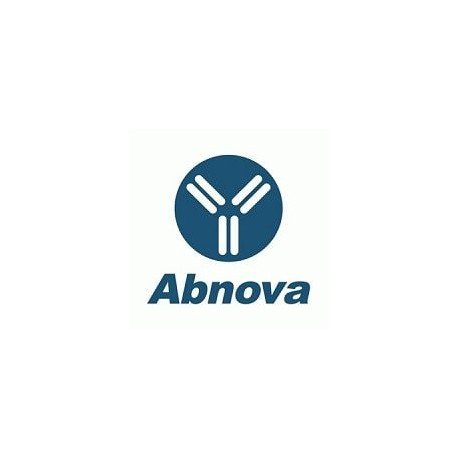Cart 0 Product Products (empty)
No products
To be determined Shipping
0,00 € Total
Prices are tax excluded
Product successfully added to your shopping cart
Quantity
Total
There are 0 items in your cart. There is 1 item in your cart.
Total products (tax excl.)
Total shipping (tax excl.) To be determined
Total (tax excl.)
Data sheet of SEMA3A polyclonal antibody
| Brand | Abnova |
| Product type | Primary antibodies |
| Reactivity | Human,Mouse,Rat |
| Host species | Rabbit |
| Applications | WB,ELISA,IHC-P |
More info about SEMA3A polyclonal antibody
| Brand: | Abnova |
| Reference: | PAB7888 |
| Product name: | SEMA3A polyclonal antibody |
| Product description: | Rabbit polyclonal antibody raised against synthetic peptide of SEMA3A. |
| Gene id: | 10371 |
| Gene name: | SEMA3A |
| Gene alias: | Hsema-I|Hsema-III|MGC133243|SEMA1|SEMAD|SEMAIII|SEMAL|SemD|coll-1 |
| Gene description: | sema domain, immunoglobulin domain (Ig), short basic domain, secreted, (semaphorin) 3A |
| Immunogen: | A synthetic peptide corresponding to internal region of human SEMA3A. |
| Form: | Liquid |
| Recommend dilutions: | ELISA (1:2000) Western Blot (1:500) The optimal working dilution should be determined by the end user. |
| Storage buffer: | In PBS (50% glycerol, 1 mg/mL BSA, 0.05% sodium azide) |
| Storage instruction: | Store at -20°C. Aliquot to avoid repeated freezing and thawing. |
| Quality control testing: | Antibody Reactive Against Synthetic Peptide. |
| Note: | This product contains sodium azide: a POISONOUS AND HAZARDOUS SUBSTANCE which should be handled by trained staff only. |
| Product type: | Primary antibodies |
| Host species: | Rabbit |
| Antigen species / target species: | Human |
| Specificity: | The sequence used is highly conserved in rat and mouse Sema3A, and has low homology to other semaphorin family members. |
| Reactivity: | Human,Mouse,Rat |
| Application image: |  |
| Application image note: | Western blots of neonatal rat brain (lane 1) and human recombinant SEMA3A chimera (95/125 kDa) (lane 2). Blots were probed with SEMA3A polyclonal antibody (Cat # PAB7888). The antibodies recognize both the 95 kDa and 125 kDa forms of the recombinant SEMA3A. |
| Applications: | WB,ELISA,IHC-P |
| Shipping condition: | Dry Ice |
| Publications: | Loss of MiR-223 duplex (5p and 3p) aggravates myocardial depression and mortality in polymicrobial sepsis.Wang X, Huang W, Yang Y, Wang Y, Peng T, Chang J, Caldwell CC, Zingarelli B, Fan GC Biochim Biophys Acta. 2014 Jan 29. pii: S0925-4439(14)00028-3. doi: 10.1016/j.bbadis.2014.01.012. |


